
- Ancient Indian History - Home
- Study of Indian History
- Writing of Ancient Indian History
- Imperialist Historiography
- Historiography Nationalist Approach
- Marxist School of History
- Sources of Ancient Indian History
- Archaeological Sources
- Geographical Background
- Geography in Ancient Literature
- Stone Age Cultures
- Mesolithic Culture
- The Neolithic Age
- Chalcolithic Period of India
- Chalcolithic Culture In India
- Harappan Civilization
- Harappan Town Planning
- Harappan Crafts & Industries
- Harappan Culture
- Harappan Religion
- Harappan Chronology
- Vedic Civilization
- Vedic Society
- Vedic Politics
- Vedic Religion & Philosophy
- The Aryan Invasion
- Later Vedic Age
- Social System after Vedic Age
- Achievements of Indian Philosophy
- Evolution of Jainism
- Evolution of Buddhism
- Alexander’s Campaign in India
- Maurya Dynasty
- Kalinga War & its Impact
- Society & Economy during Mauryas
- Mauryan Governance
- Early History of South India
- Age of Smaller Dynasties
- Literature of Satavahana Period
- Society of Satavahana Period
- Economy of Satavahana Period
- Technology of Satavahana Period
- Chola Dynasty
- Pandya Dynasty
- Chera Dynasty
- Period of Foreign Invaders
- Gupta Period
- Decline of Guptas
- Governance of Gupta Period
- Literature of Gupta Period
- Economy in Gupta Period
- Science & Tech of Gupta Period
- India after the Gupta Period
- Period of Harsha
- South India during the Harsha Period
- Kadamba Dynasty
- History of Kamarupa
- India after Harsha
- Gurjara Pratiharas
- Palas of Bengal
- Rashtrakutas of Deccan
- Literature after the Harsha Period
- Society after the Harsha Period
- Economy after the Harsha Period
- Religion after the Harsha Period
- References & Disclaimer
Literature of Gupta Period
Gupta period was considered as the golden phase of Indian literature.
The wonderful literature was produced in prose, poetry, drama, and grammar. It is the noticeable product of the system of education and learning.
The Puranas preserved the traditions, legends, moral codes, religious, and philosophical principles. They are eighteen in number.
The Smritis are metrical texts containing the rules and regulations and laws for the guidance and governance of the society.
Smritis are based on dharmasutras and grihyasutras of Vedic literature. They are written in verse.
Some additions and alterations have been done to make Smritis suitable to the changing conditions of society.
The commentaries on the Smritis were written after the Gupta period.
The compilation of Ramayana and Mahabharata was completed by the 4th century A.D.
Kalidas has written the best works in poetry, drama as well as in prose. His kavyas such as Meghaduta, Raghuvamsa, and Kumarasambhava, and dramas such as Abhijnashakuntalam are the best literary works of this time and it is considered as the best even today. These works have been translated into many languages.
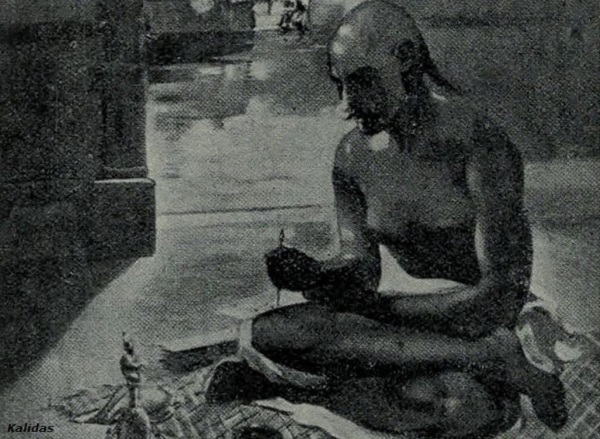
Kalidas adorned the court of Chandragupta-II, the king of Ujjayini, who was popular as Vikramaditya.
Inscriptions as Source
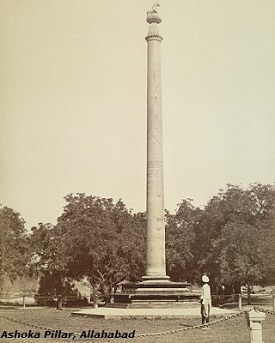
-
A few inscriptions of the period are −
The Allahabad pillar inscription composed by Harisen;
Mandsor inscription composed by Vatsabhatt; and
Junagarh rock inscription, Mehrauli Pillar inscription, Aihole inscription composed by Ravikriti.
These all inscriptions (listed above) consist most of the characteristics features of Sanskrit kavya.
The most notable in the field of drama were Bhasa, Sudraka, Kalidas, and Bhavabhuti.
Mrichchakatika (written by Sudraka), is considered one of the best plays of ancient India. This play is about the love of a Brahman with the beautiful daughter of a courtesan.
Vishakhadatta had written two plays, namely Mudrarakshasa and Devichandraguptam.
Famous plays written by Kalidas are Malavikagnimitram, Abhijnanashakuntalam, and Vikramorvasiyam.
Uttararama-charita and Malati-Madhava were written by Bhavabhuti.
Panchatantra, written by Vishnu Sharma, is one of the most famous works of this period. It was translated into Persian and Arabic in the 8th century A.D. and has been translated into almost all European languages by the time.
The popular work Hitopadesa is based on the Panchatantra.
Harshacharita is the biography of Harsha written by Banabhatta. It is an outstanding work of the period.
The development of Sanskrit grammar (based on Panini and Patanjali) was also seen in this period.
Bhartrihari composed three Shatakas. He had also written a commentary on the Mahabhasya of Patanjali.
The compilation of the Amarakosha by Amarasimha is memorable work of this period. Amarasimha was a popular personality in the court of Chandragupta II.
The Prakrit was popular language of the Gupta period (as it was earlier).
The Svetambara Jain canon have been written in Ardha-Magadhi Prakrit.
The religious texts of the Digambara Jain (of south India) were written in the Maharashtri and Sauraseni Prakrits.
The commentaries on Buddhist texts were written in Pali.
Prakritaprakasha written by Vararuchi and Prakritalakshana written by Chanda are the well-known grammar works on Prakrit and Pali language.
Katyayanaprakarna is a Pali grammar book.
Foreign Accounts
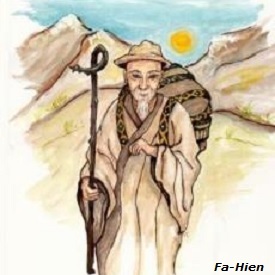
Fa-Hien, the Chinese pilgrim with four other monks, came to India during the reign of Chandragupta II.
Fa-Hien came to India through land route via central Asia and Kashmir and traveled across north India.
Fa-Hien stayed three years at Patliputra and here he learned the Sanskrit language.
Fa-Hien was interested only in Buddhism; however, he gave an idea of general peace and welfare during Guptas court.
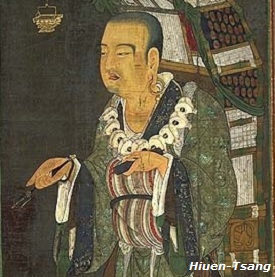
Hiuen-Tsang, another Chinese traveler, visited India during Harsha's reign. He spent thirteen years in India, in which eight years, he stayed in Harsha's kingdom.
Hiuen-Tsang had studied at Nalanda University. He visited various Indian kingdoms and mentioned about their condition. His book Si-yu-ki is a precious source of ancient Indian history.
Hiuen-Tsang was honoured by Harshavardhana of Kanauj and Bhaskarvarma of Assam.
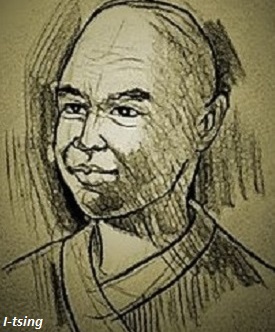
I-tsing, a Chinese traveler, came to India via sea route. He spent many years in Sumatra and Sri Vijaya and learned Buddhism.
I-tsing stayed at Nalanda for ten years and studied and translated Buddhist texts.
I-tsing compiled a Sanskrit Chinese dictionary and translated a number of Sanskrit texts.
I-tsing mentioned about Buddhist Religion as Practised in India. He gave a detailed account of Buddhism and general condition of India and Malaya.